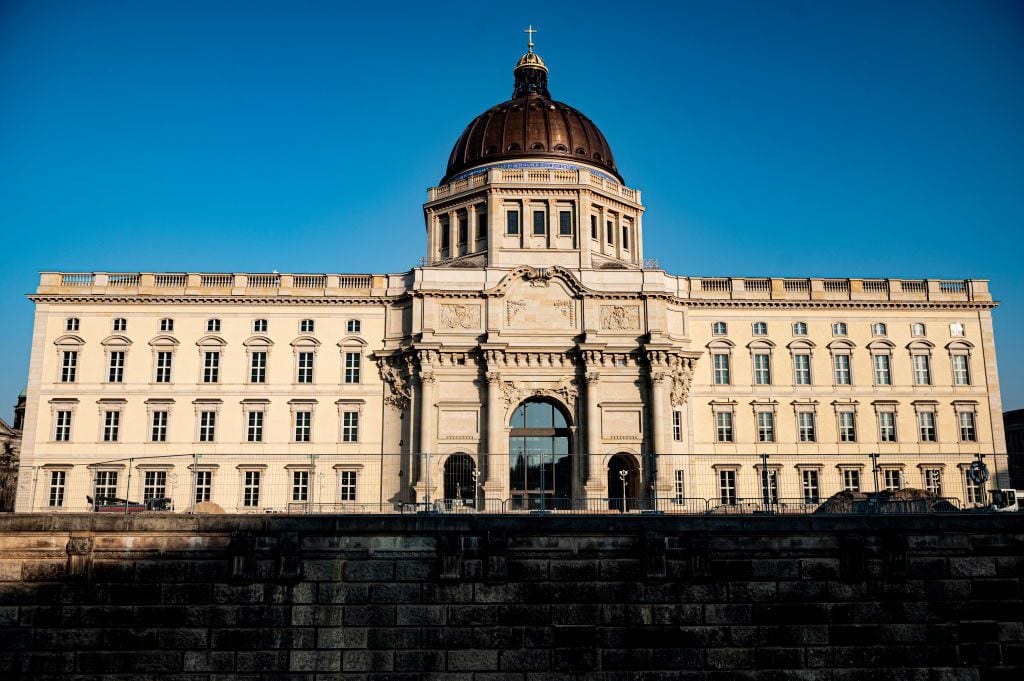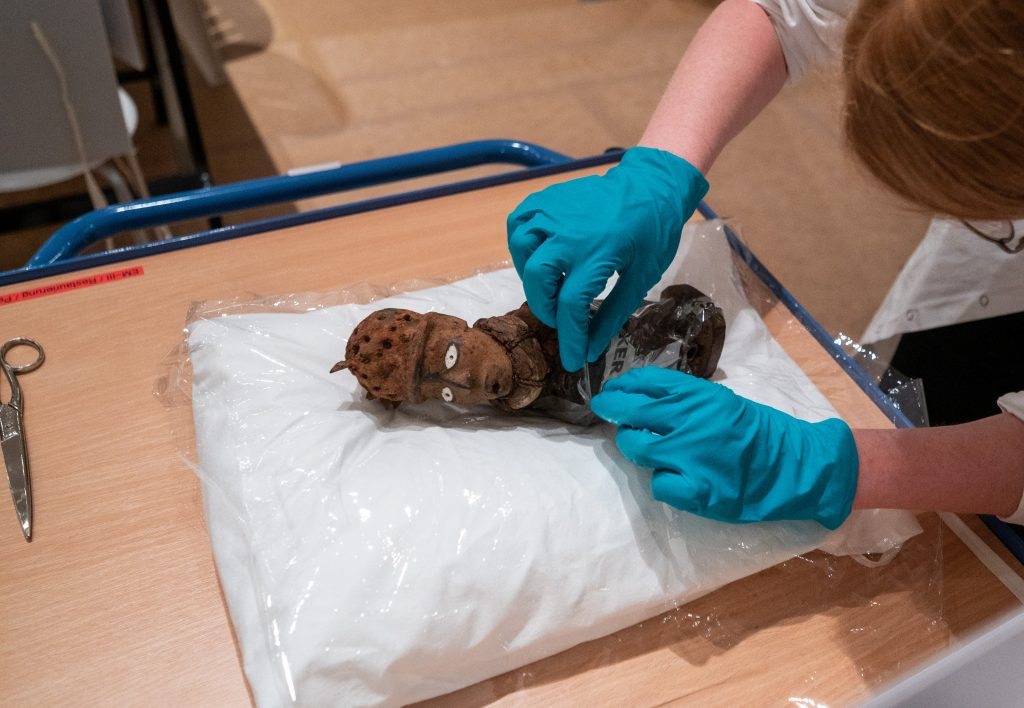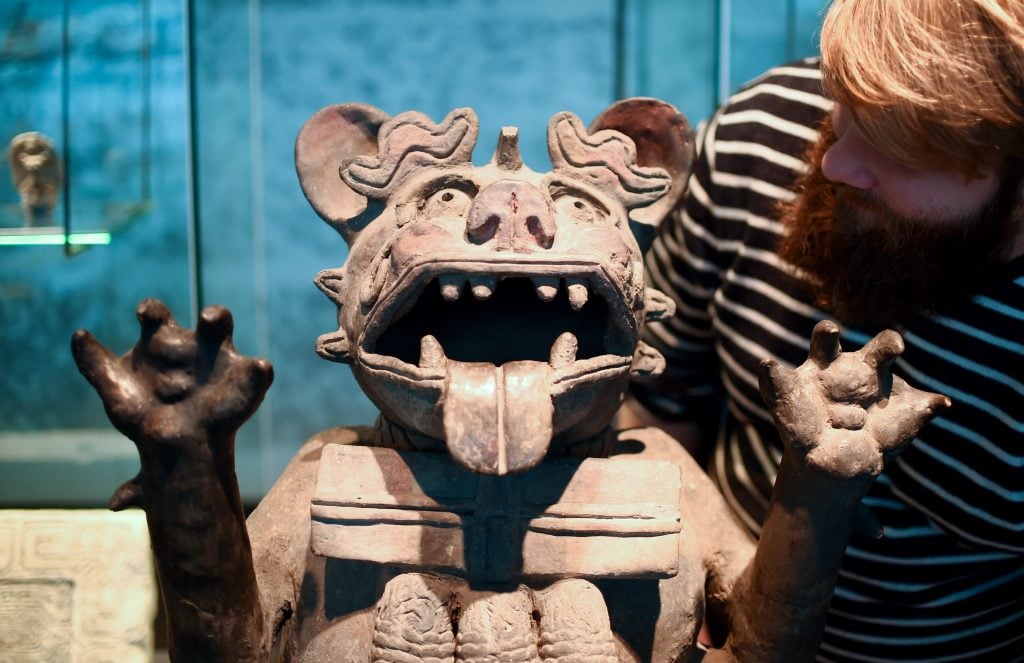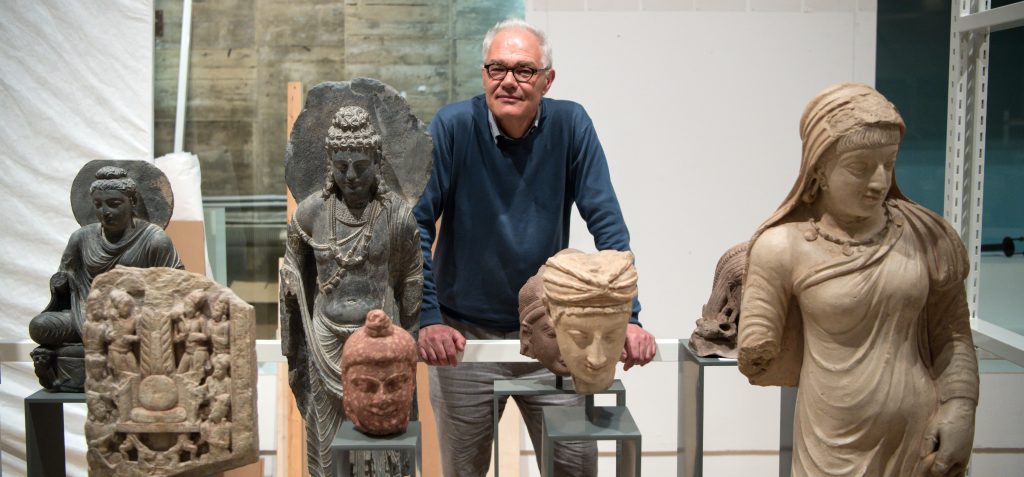Museums & Institutions
How Will Berlin’s Embattled Humboldt Forum Deal With Its Imperialist Past? Its New Asian and Ethnological Museums Provide Clues
The Humboldt Forum has opened its two most controversial institutions yet.

The Humboldt Forum has opened its two most controversial institutions yet.

Quynh Tran

After July’s inauguration of the Humboldt Forum, an institution that’s arguably the most controversial German cultural project in decades, the Berlin venue is now partly opening its most embattled divisions.
On Wednesday, with festive addresses by German president Frank-Walter Steinmeier and Nigerian writer Chimamanda Ngozi Adichie, the Humboldt opened the Museum of Asian Art and the Ethnological Museum, institutions brimming with objects of questionable provenance histories.
Slumbering in Berlin’s periphery in Dahlem for a century, the formidable troves of 500,000 objects, one of the largest ethnographic collections in the world, were only brought to wide attention with their move to Humboldt Forum.
The partially reconstructed baroque imperial palace in the district’s historical center, at times dubbed a “heritage mall,” was built on a €680 million ($802 million) budget and was controversial even before its usage was determined. Besides the ethnographic collections, it also houses the Foundation for the Humboldt Forum, parts of Humboldt University, and the City Museum. Upon completion, about 20,000 objects from the ethnographic museums, many on view to the public for the first time, will occupy an exhibition space of about 90,000 square feet, designed by Ralph Applebaum Associates on the second and third floors of the building’s west wing. Only a fifth of the museum space is accessible now; the rest, including the Benin bronzes and the Amazonas collection, will open next spring.

A small statue is prepared in an exhibition room at the Humboldt Forum. Photo by Christophe Gateau/picture alliance via Getty Images.To some scholars and activists, the non-European collections, displayed in a revived vessel of Prussian imperialism, felt like a bitter irony. Public objections have gained more steam since art historian Bénédicte Savoy resigned from Humboldt Forum’s expert panel in 2017, citing her dissatisfaction with the institution’s failure to address provenance issues. The Ethnological Museum and the Museum of Asian Art have since hired four restitution experts.
But as controversies continue, the opening illustrated how the focus of presentation shifted from what is to be displayed to how it is to be displayed. It was the kickoff to an ongoing negotiation.
“It’s not a museum, it’s a venue,” Hermann Parzinger, president of the Prussian Cultural Heritage Foundation (SPK), which oversees the museums, said in his opening address. Andrea Scholz, the museums’ scientific officer for transcultural cooperation, added that the colonial debate is just the tip of the iceberg, which society is only beginning to understand: “We are still practicing to listen.”
The attempt is especially evinced in the contemporary interventions in the African collection. Between displays of African antiques, sorted—without context—by region, stories of Sambian migrants to East Germany and a collaboration with the Museums Association of Namibia made an effort to put Germany’s colonial ties into a present-day context. Transcultural cooperation with the “societies of origin” of cultural objects will remain pivotal, the SPK emphasized.
But despite these efforts and repeated pledges to address racism and remnants of colonialism tied to the ethnographic collections, the displays failed to address some obvious questions. One of the prime exhibits of the African collection, the 19th-century throne from the Kingdom of Bamum, seems randomly placed in the middle of a hall rather than in a befitting royal setting. Besides rather scant visible discussion (information comes mainly via QR codes), there was little mention that some ancestors of the king of Bamum in Cameroon, a former German colony, have claimed restitution.

A young man examines an Aztec sclupture at the ethnological museum in Berlin. Photo by Britta Pedersen/picture alliance via Getty Images.
The SPK was the first to initiate restitution processes for its collection of some 500 Benin bronzes, which will be exhibited in this venue for the last time in spring before returning to Nigeria starting in June 2022. The institution has remained more quiet on other subjects, with Parzinger reiterating only that there will be more “substantial restitutions” in the future.
Other objects remain problematic as well, including the display of the outrigger boat from Luf Island, and many objects from the South Seas, former German colonies. Until German historian Götz Aly revealed that a punitive expedition and near eradication of the local population directly preceded the displacement of the boat in May of this year, the SPK maintained it was justly acquired. In an apologetic move, the museum added information on the plundering of Luf Island and commissioned Melanesian filmmaker Martin Maden to visit the island to look into the story. Maden discovered descendants of survivors of the German massacre. Stanley Inum, a descendant, did not raise the matter of restitution; he suggested a visit to Berlin to look at the boat and build a new one. “The knowledge has to be brought back to us,” he said in a film shown next to the boat.
But the vessel is only one object in one of the world’s largest and finest collections of Oceanic art and artifacts. It’s likely that the bulk of the trove of the Oceanic collection was robbed, but the descriptions by the museum remain “tone-deaf and blank,” according to Aly, writing in a recent op-ed in the German daily FAZ.

Klaas Ruitenbeek, director of the Berlin Museum of Asian Art, stands next to exhibits of the Museum of Asian art in the special exhibition hall of Dahlem Museum, Berlin. Photo by Bernd von Jutrczenka/picture alliance via Getty Images.
This may well apply to immaterial heritage as well: The museum has been confronted with Indonesian peoples’ call to destroy some of the audio recordings in its musical ethnology department, which are considered sacred by the societies of origin.
Although less disputed, as Germany was not a significant colonial power in Asia, the Museum of Asian Art also holds some notable treasures, including the Wang Shu Room that houses the 18th-century mural “The Buddha Sermon,” and the “Nandi,” a bull sculpture from south India. While most of the exhibits in the Asian section have remained largely shielded from post-colonial controversies, the Silk Road murals have recently raised questions of rightful acquisition, too.
Even before it opened, Humboldt Forum has become a negotiation ground in a way it has not envisioned. The Museum of Asian Art and the Ethnological Museum, the two institutions at the center of the storm, maintain a willingness to address pressing questions of historical justice and present-day entanglements and remnants of colonialism. But as they yet have to fully open, they will have to work on a deeper mediation on the provenance of their collection—and that’s a long path given the troves of about 500,000 material and hundreds of thousands more of immaterial objects.